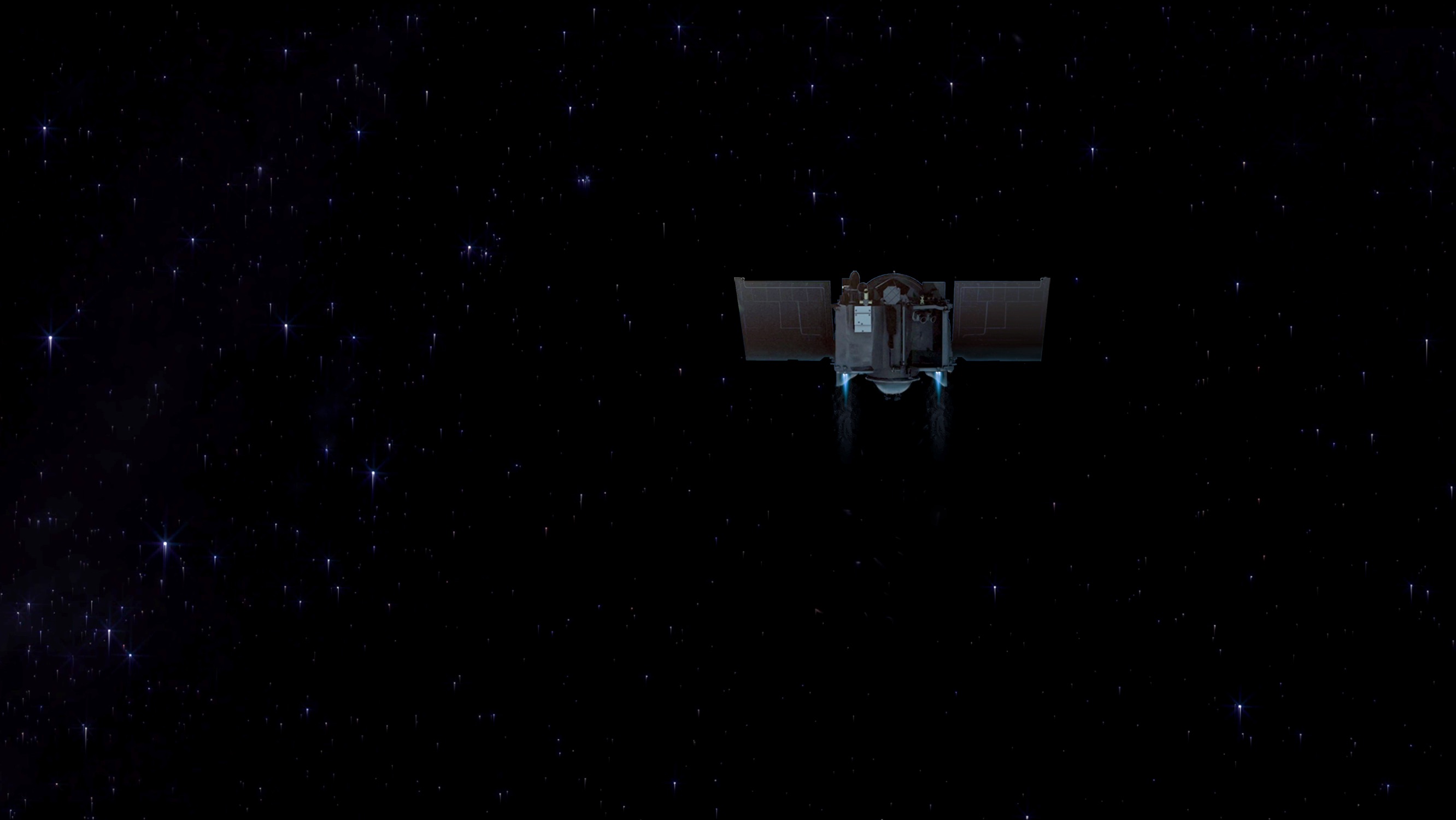NASA Spacecraft Refines Course Toward Big Asteroid Bennu

A NASA asteroid-sampling probe remains on target for its December rendezvous with a big, potentially dangerous space rock.
The OSIRIS-REx spacecraft aced its second major deep-space maneuver last Thursday (June 28), firing its engines to change its velocity by 37 mph (60 km/h), mission team members have confirmed.
"The thruster burn put the spacecraft on course for a series of asteroid-approach maneuvers to be executed this fall that will culminate with the spacecraft's scheduled arrival at asteroid Bennu on Dec. 3," NASA officials wrote in a statement Tuesday (July 3). [OSIRIS-REx: NASA's Asteroid Sample-Return Mission in Pictures]
OSIRIS-REx& launched in September 2016, on an $800 million mission to orbit, study and snag samples from the 1,640-foot-wide (500 meters) Bennu. The probe's first big engine burn came in December 2016, though OSIRIS-REx executed a series of smaller firings shortly thereafter to set up a speed-boosting flyby of Earth in September 2017.
The asteroid-approach maneuvers are scheduled to begin in early October, with a burn designed to reduce OSIRIS-REx's velocity relative to Bennu from 1,130 mph to 320 mph (1,820 to 515 km/h). Three more engine firings will follow that initial one leading up to the Dec. 3 rendezvous, NASA officials said.
If all goes according to plan, OSIRIS-REx — whose name is short for Origins, Spectral Interpretation, Resource Identification, Security, Regolith Explorer — will study Bennu from orbit for a while, then swoop in to grab a hefty sample from the asteroid's surface in July 2020.
This material will make it to Earth in a special return capsule in September 2023. Scientists in labs around the world can then study the sample in detail, gathering data that should reveal clues about the solar system's early days and the role that space rocks such as Bennu may have played in delivering life's building blocks to Earth.
Get the Space.com Newsletter
Breaking space news, the latest updates on rocket launches, skywatching events and more!
OSIRIS-REx isn't the only asteroid-sampling craft plying the heavens; Japan's Hayabusa2 probe arrived at the 3,000-foot-wide (900 m) asteroid Ryugu last week. Hayabusa2 is scheduled to grab its sample in December 2019, and the material should touch down here on Earth a year later.
Follow Mike Wall on Twitter @michaeldwall and Google+. Follow us @Spacedotcom, Facebook or Google+. Originally published on Space.com.
Join our Space Forums to keep talking space on the latest missions, night sky and more! And if you have a news tip, correction or comment, let us know at: community@space.com.

Michael Wall is a Senior Space Writer with Space.com and joined the team in 2010. He primarily covers exoplanets, spaceflight and military space, but has been known to dabble in the space art beat. His book about the search for alien life, "Out There," was published on Nov. 13, 2018. Before becoming a science writer, Michael worked as a herpetologist and wildlife biologist. He has a Ph.D. in evolutionary biology from the University of Sydney, Australia, a bachelor's degree from the University of Arizona, and a graduate certificate in science writing from the University of California, Santa Cruz. To find out what his latest project is, you can follow Michael on Twitter.









